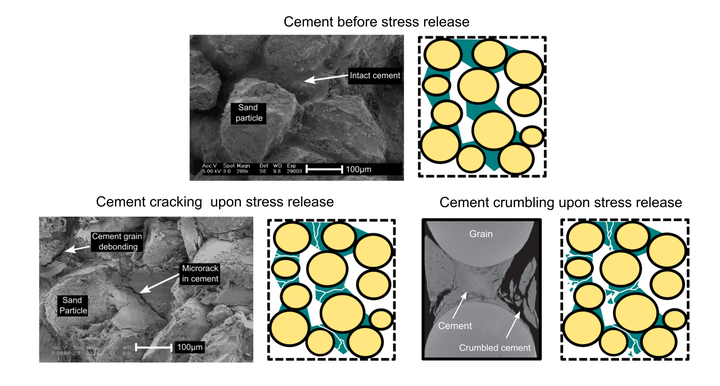Stress sensitivity of elastic moduli in high-porosity cemented sandstone — Heuristic models and experimental data

Abstract
Laboratory studies have indicated that the wave velocity of high porosity cemented sandstone is asymmetrically much more sensitive to stress unloading than stress loading. However, there is a lack of a simple rock physics model that is capable of describing the asymmetric stress sensitivity of reservoir rock. We propose a new rock physics model by extending an existing rock physics model based on contact theory combined with elastic bounds. The new model relates the stress softening of rock to cement cracking and crumbling induced by stress release. The diluting factor is introduced to describe the weakening of effective cement and analyze the increase of stress sensitivity when the stress is gradually removed. The combination of the new model and its base model forms a rock physics modeling workflow that can accurately describe the evolution of velocities measured in samples undergoing stress loading and unloading. The model performance is compared with samples representing synthetic weakly cemented glass bead pack and sandstone manufactured with different cements at different forming stress levels. The modeling results are in accordance with the measured stress sensitivities of wave velocities. The sequential model calibration using a simple constraint optimization approach yields important calibration parameters that are indicative of the elastic stress sensitivity and damage behavior in the studied rocks.